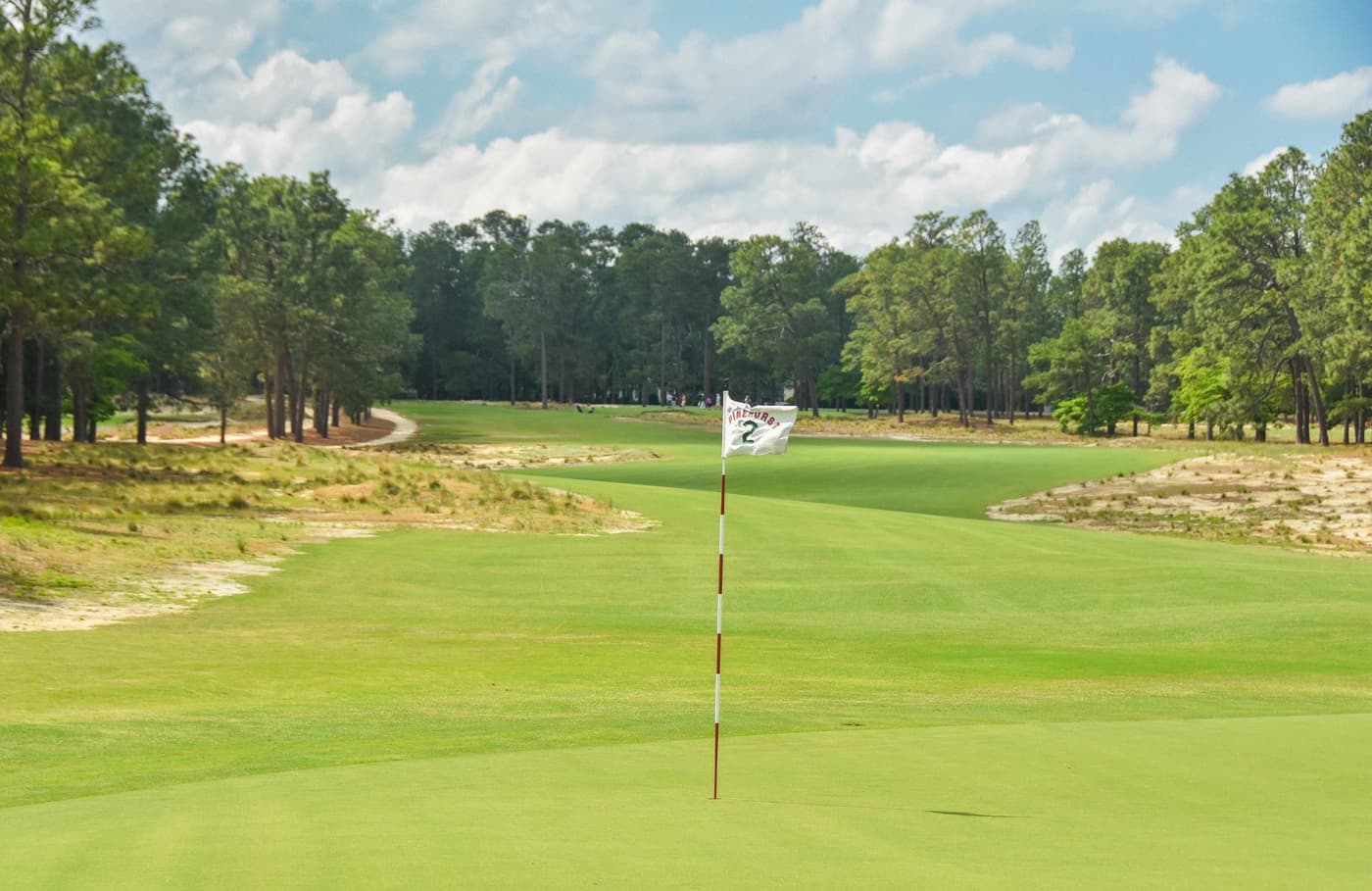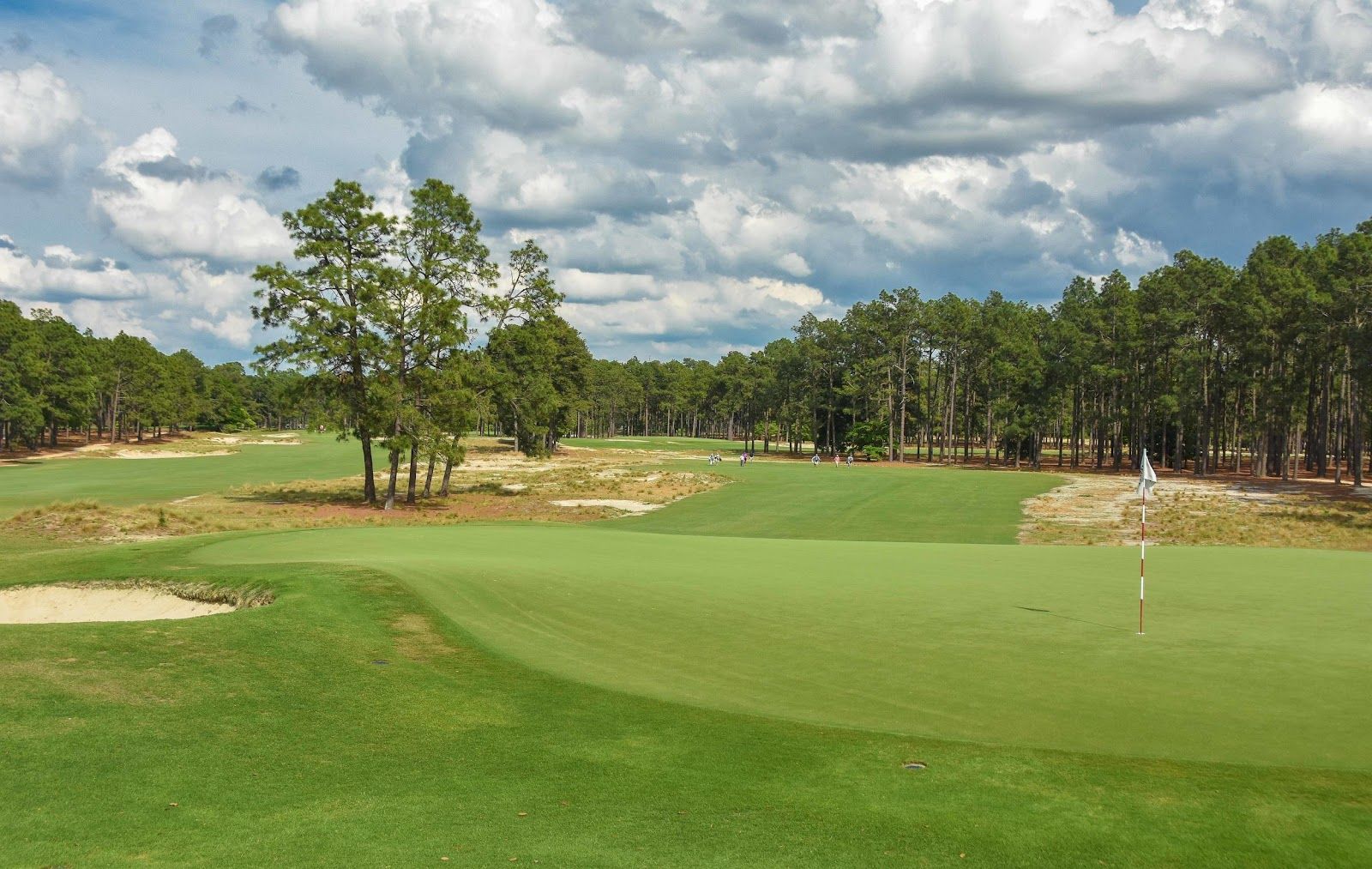
- Address1 Carolina Vista Dr, Pinehurst, NC 28374, USA
- Championships hosted
Pinehurst Resort & Country Club played host to the 1951 Ryder Cup matches between the USA and Great Britain. Team Captains were Sam Snead (US) and Arthur Lacey (GB). Sam Snead often cited Pinehurst No.2 as his favourite course and the US Captain turned the event into a rout despite a rather bizarre interlude when the competition was suspended so that both teams could attend a football game. Arthur Lees spared the British embarrassment by scoring 2 points and Jimmy Demaret retired from Ryder Cup competition with the best unbeaten record (6-0-0) in event history. USA 9 ½ - GB 2 ½. The Ryder Cup was played at Ganton in 1949 and at Wentworth in 1953.
With more than 100 years of history and nine golf courses cleverly routed through 2,000 acres of North Carolina’s sandhills, you’ll need to schedule a little more time than usual to fully absorb the incredible Pinehurst experience.
Donald J. Ross made the trip from his native Scotland to America in 1899 with the objective of introducing the royal and ancient game to a burgeoning nation. Shortly after his arrival, James W. Tufts, the visionary behind the Pinehurst Resort, commissioned Ross and he stayed on at Pinehurst for a further 48 years.
In the early days, Pinehurst had a simple rudimentary 9-hole course but that was soon to change. Ross cut his golfing teeth at Royal Dornoch and their domed greens were soon to become his hallmark. Pinehurst No.2 opened for play in 1907 and its green sites are the ultimate test, legendary and quite unique. These average sized putting surfaces have been known to reduce a grown man to tears. With wicked fall offs around the edges, these greens are actually much smaller than they look and they will hold only the best or the luckiest approach shots. Vivid imagination and the finest skill are required to negotiate these greens in regulation.
So, is Pinehurst No.2 all about the greens? The short answer is no. No.2 course has a few world-class holes (5th, 9th and 16th) and as a complete course it has to be one of the most finely balanced and most difficult courses we have ever played. It’s no wonder it was the chosen venue for the 1999, 2005 and 2014 US Opens. And we’re sure many people will recall with affection Payne Stewart’s remarkable final hole putt, which secured the 1999 title.
“Americans, unlike the British, are not given to playing in the rain,” wrote Robert Trent Jones in The Complete Golfer, “but at Pinehurst they make what is perhaps their one exception. I dare say that more people play in the rain at Pinehurst than at any other golf course in America. In fact, if you have a wind-breaker and an umbrella, it’s a rather pleasant thing to do, because the sand underfoot makes for relatively dry walking. In the rain, the pine trees seem to glisten, making each hole an individual jewel.” Maybe playing in the rain at Pinehurst is not a bad idea... the greens will be more manageable perhaps?
The design firm of Coore and Crenshaw was engaged at Pinehurst with a brief to return the No.2 course to its 1930s sandy character. The renovation work was based on old aerial photographs, which included increasing fairway widths, removal of turf in the rough with sandy waste areas and numerous bunker modifications. The work started in spring 2010 and completed in 2011. The renovated Pinehurst No.2 staged the 2014 US Open and it proved to be a formidable test for all but one player. Martin Kaymer coasted to an eight-shot victory after shooting a pair of 65s in the opening two rounds, carding a 72-hole score of 271, the second lowest in U.S. Open history. Only three players finished the tournament under par.
Course Reviews
Leave a Review
This course has not been reviewed.
If you have played this course, consider .
Thanks for the review
Your review has been successfully submitted and will be reviewed for approval.
Course Reviewed
You’ve already submitted a review for this course.
Course Architect
View All
Coore and Crenshaw Inc. was established in 1986, but five years passed before the partnership made a real architectural impact when the Plantation course at Kapalua burst onto the scene in 1991.




